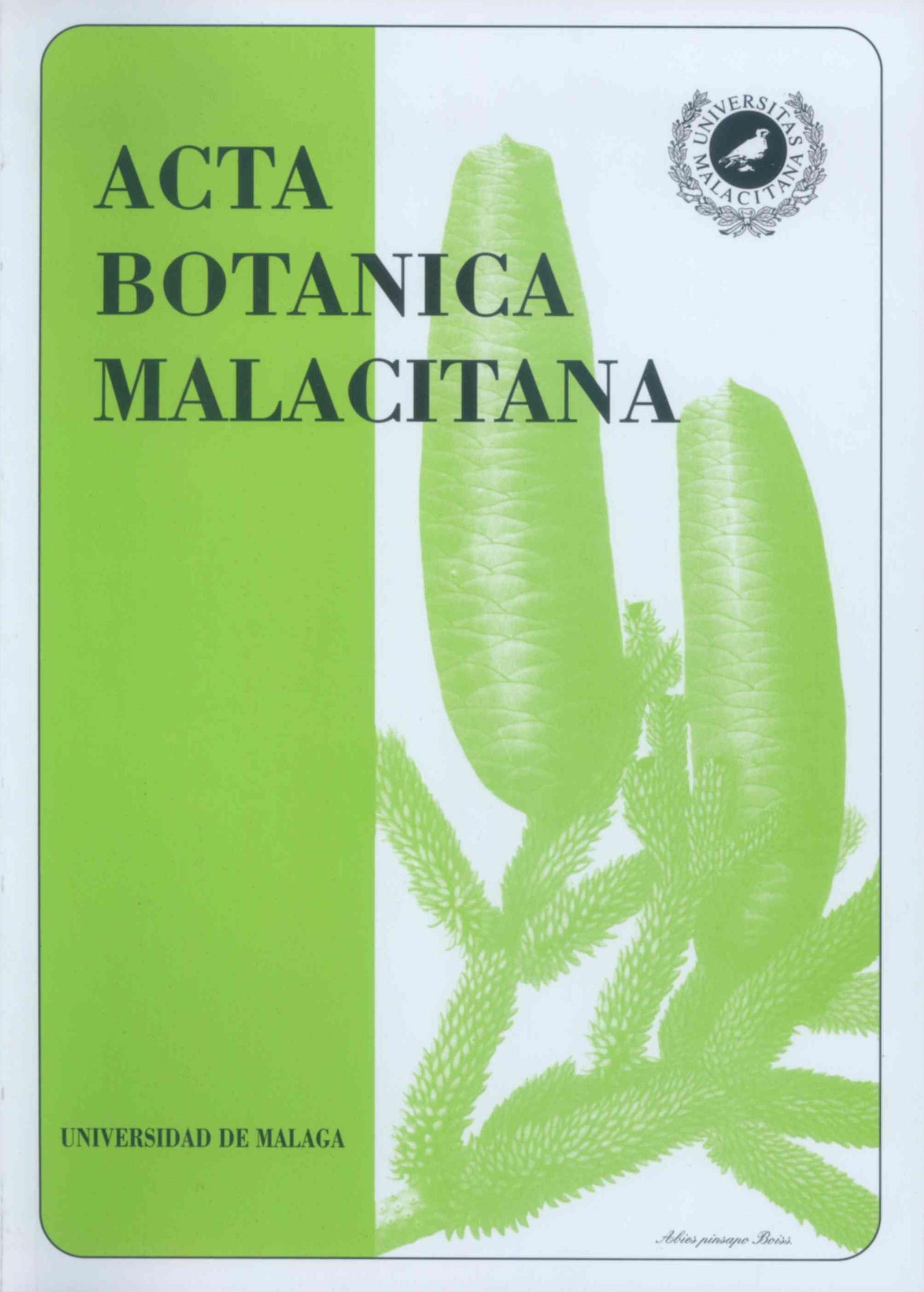Assessment of atmospheric contamination by SO2 in the area of Ferrol-Fene (La Coruña) by means of epiphytic lichens
DOI:
https://doi.org/10.24310/abm.v16i.9183Keywords:
Lichens, pollutionAbstract
A study at the Ferrol-Fene area by means of epiphytic lichens as biological monitoring of air pollution is carried up. There were selected 24 sampling points at Ferrol town and another 5 at Fene. The used methods were the Index of Atmospheric Purity (TAP.) of Leblanc & De Sloover (1970), the qualitative scale of Hawksworth & Rose (1970) and the qualitative scale modified for Galicia of Carballal & Garci?a Molares (1987-88). Three zones of isopollution were delimited and mapped taking in account the I.A.P. and the qualitative scale modified for Galicia.
Downloads
Metrics
References
BENTO-PEREIRA, F. & C. SERGIO -1983- Li?quenes e brio?fitos como bioindicadores da poluiçao atmosfe?rica. II. Utilizaçao de una escala qualitativa para Lisboa. Rev. de Biologi?a, 12: 297-312.
CANNON, P. F., D.L. HAWKSWORTH & M.A. SHERWOOD-PIKE -1985- The British Ascomycotina. An annotated Checklist. Commonwealth Mycologycal Institute. The British Mycological Society. London.
CARBALLAL, R. & A. GARCIA MOLARES -1987/88- Li?quenes epi?fitos como indicadores de contaminacio?n atmosfe?rica. II. Utilizacio?n de una escala cualitativa en la ciudad de Vigo (Espan?a). Lazaroa, 10 (2): 243-251.
CRESPO, A., E. BARRENO, L.G. SANCHO & A.G. BUENO -1981- Establecimiento de una red de valoracio?n de pureza atmosfe?rica en la provincia de La Corun?a (Espan?a) mediante la utilizacio?n de bioindicadores lique?nicos. Lazaroa, 3: 289-311.
CRESPO, A., E. MANRIQUE, E. BARRENO E. & SERINA -1987- Valoracio?n de la contaminacio?n atmosfe?rica del a?rea urbana de Madrid mediante bioindicadores (li?quenes epi?fitos). Anal. del Inst. Bot. J. Cavanilles, 34 ): 71-94.
DERUELLE, S. & F. GARCIA-SCHAEFFER -1983- Les lichens bioindicateurs de la pollution atmosphe?rique dans la re?gion parisienne. Cryptogamie; Bryol., Liche?nol., 4 (1): 47-64.
GIRALT, M. -1986- Flora i vegetacio? deis liquens epi?fits tarragone?s. Aplicacio? al problema de la contaminacio? atmosfe?rica. Ed. Fundacio? Antoni i Vicentc Mestres fane?. Villafranca del Penede?s.
HAWKSWORTH, D. L. & F. ROSE -1970- Qualitative scale for stimating sulphur dioxide air pollution in England and Walesusing epiphytic lichens. Nature, 227: 145-148.
LEBLANC, F. & J. DE SLOOVER -1970- Relation between industrialization and growth of epiphytic lichen and mosses in Montreal, Can. Journal of Botany, 48 (7): 1485-1496.
LEROND, M. -1978- Courbes d'isopollution de la re?gion de Rouen obtenues par l'observation des lichens epiphytes. Bull. Soc. Linn. Normandie, 106: 73-84.
LEROND, M. -1984- Utilisation des lichens pour la cartographic et le suivi de la pollution atmosphe?rique. Bull. Ecol., 15 (1): 7-11.
TERRON, A. & T.E. DIAZ -1987- Establecimiento de las zonas de isocontaminacio?n en la zona de Ponferrada (Leo?n) mediante el empleo de bioindicadores lique?nicos. Act. VI ,Simp. Nac. Bot. Cript.: 461-470.
VAN HALUWYN, C. & M. LEROND -1988- Liche?nosociologie et qualite? de l'air: protocolo operatoire et limites. Cryptogamie, Bryol., Liche?nol., 9 (4): 313-336.
Downloads
Published
How to Cite
Issue
Section
License
All information related to the licensing of published works in Acta Botanica Malacitana and copyright can be found in our Editorial Policy.







1.png)
